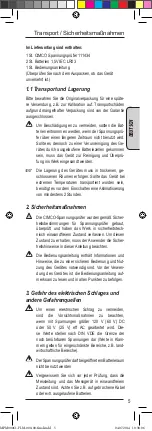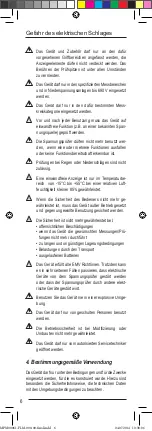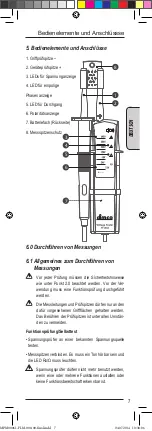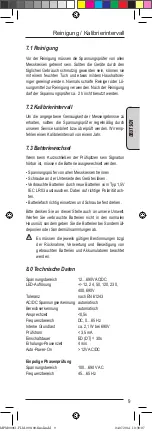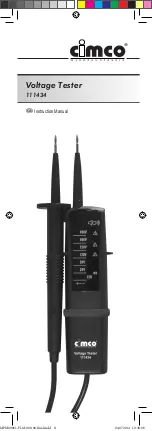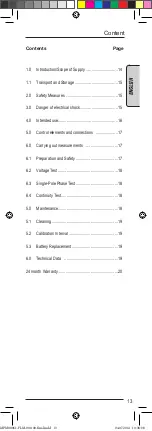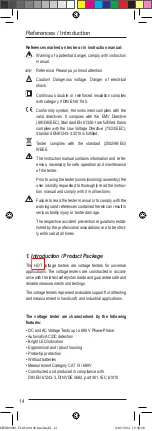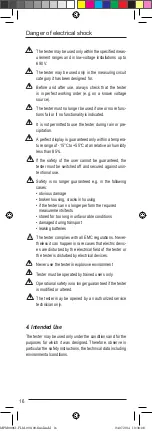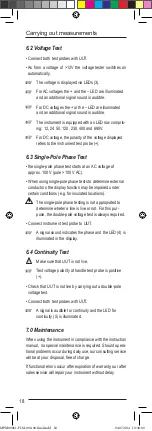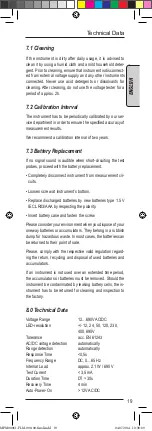
ENGLSIH
19
Technical Data
7.1 Cleaning
If the instrument is dirty after daily usage, it is advised to
clean it by using a humid cloth and a mild household deter-
gent. Prior to cleaning, ensure that instrument is disconnect-
ed from external voltage supply and any other instruments
connected. Never use acid detergents or dissolvants for
cleaning. After cleaning, do not use the voltage tester for a
period of approx. 2h.
7.2 Calibration Interval
The instrument has to be periodically calibrated by our ser-
vice department in order to ensure the specified accuracy of
measurement results.
We recommend a calibration interval of two years.
7.3 Battery Replacement
If no signal sound is audible when short-circuiting the test
probes, proceed with the battery replacement.
• Completely disconnect instrument from measurement cir-
cuits.
• Loosen screw at instrument’s bottom.
• Replace discharged batteries by new batteries type 1.5 V
IEC LR03/AAA by respecting the polarity.
• Insert battery case and fasten the screw.
Please consider your environment when you dispose of your
oneway batteries or accumulators. They belong in a rubbish
dump for hazardous waste. In most cases, the batteries can
be returned to their point of sale.
Please, comply with the respective valid regulation regard-
ing the return, recycling and disposal of used batteries and
accumulators.
If an instrument is not used over an extended time period,
the accumulators or batteries must be removed. Should the
instrument be contaminated by leaking battery cells, the in-
strument has to be returned for cleaning and inspection to
the factory.
8.0 Technical Data
Voltage Range
12…690V AC/DC
LED-resolution
+/- 12, 24, 50, 120, 230,
400, 690V
Tolerance
acc. EN 61243
AC/DC voltage detection
automatically
Range detection
automatically
Response Time
<0,5s
Frequency Range
DC, 0…65 Hz
Internal Load
approx. 2,1 W / 690 V
Test Current
< 3,5 mA
Duration Time
DT = 30s
Recovery Time
4 min
Auto-Power-On
> 12V AC/DC
MPM00061-FLM-000-00-final.indd 19
04.07.2014 10:38:09


